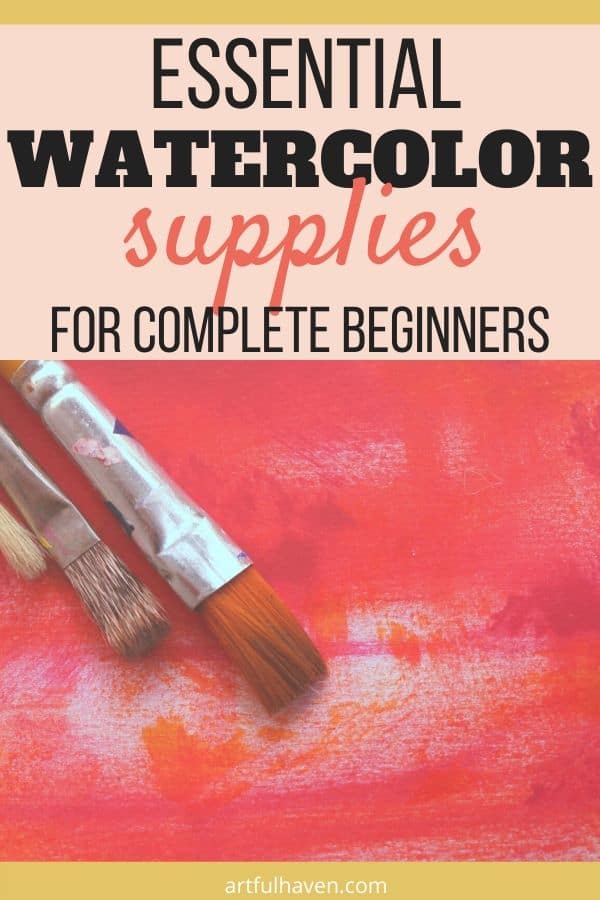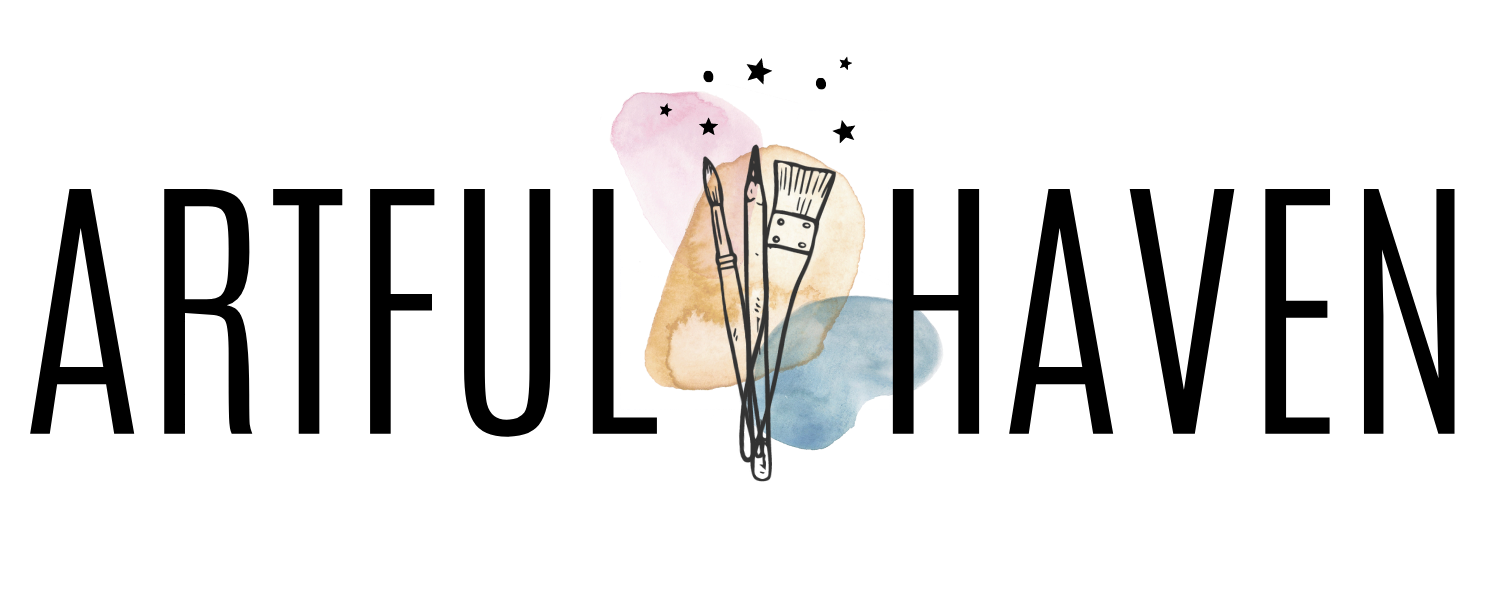7 Basic Watercolor Supplies: Guide For Beginners
When you want to buy watercolor supplies and you end up in the store, going from aisle to aisle, reading labels, checking sizes, brands, and prices, do you end up more confused than when you left your home that day?
This happened to me a gazillion times.
To be honest, I never really took the time to master everything watercolor-wise. I don’t need a brain boiling with information overload.
I just learned what I needed at the time. So, my goal is to help you with the overwhelm and the choice of watercolor supplies you’ll need.
Many beginners struggle with what kind of paper to use, what brushes to buy, and so on.
So, I’ll share basic info on watercolor supplies for beginners so that you can decide which supplies are the right for you.
Disclaimer: Some links in this post may be affiliate links. This means that if you purchase something through that link, I get a small commission, at no extra cost to you.
Watercolor supplies for beginners
1. Watercolors
2. Paper
3. Brushes
4. Pencil & eraser
5. Water jars
6. Paper towel
7. Watercolor pencils
1. Watercolors
What watercolor to choose?
There are plenty of brands and grades, and you can only get lost in the sea of choices.
However, if you’re going to use watercolor in your art journal, my guess is you don’t want paint that is too expensive. It’s not like we’re having a gallery exhibition next month, right?
Since we’re using the paint only for our journals, you can use whichever brand or grade you want. I can suggest a few that I’ve been using, to give you an idea.
I started with student-grade watercolor and usually bought them at stationery stores. They are affordable and do the trick.
However, if you need juicier colors and shades, you can always upgrade to better watercolor sets. That’s why I’ve been using Jane Davenport’s watercolor sets: brights and neutrals.
After painting with cheaper, student-grade watercolors, these sets came as a magical discovery for me. The colors are saturated and the sets have a range of different shades so you don’t have to mix colors. But you can if you want to because the sets include the basic primary colors, blue, red, and yellow.
Here are a few examples where I used Jane Davenport’s watercolors.
For this girl, I used the Neutral set which has amazing shades for painting faces.
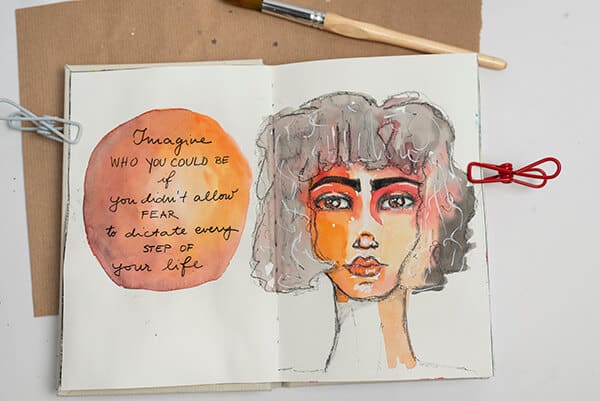
I used the brights set below. Can you see how saturated the colors are?
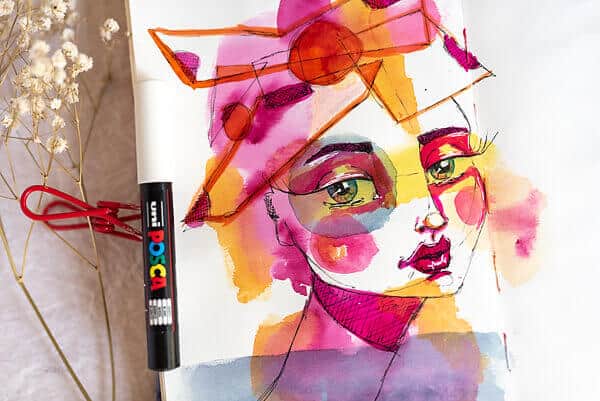
Here’s another example where I just did an abstract blob with the brights set.
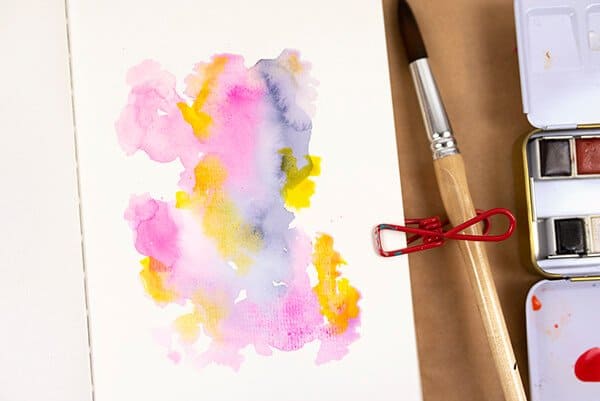
2. Paper
I can’t stress enough how important the paper is when it comes to watercolor. I think the paper is everything here.
If you try to paint with watercolor on a very thin paper like copy paper, you’ll be disappointed, that’s for sure.
Here’s the thing. You use a lot of water with watercolor, so how can that thin paper handle all that water? It just can’t. That’s why I wanted to help you choose the right paper for your needs.
We’ll go over three different types of paper and its weight.
If you can’t find the right journal for this purpose, you can easily make your own art journal, just choose the paper you’ll use, gather the pages, bind them, and there you go!
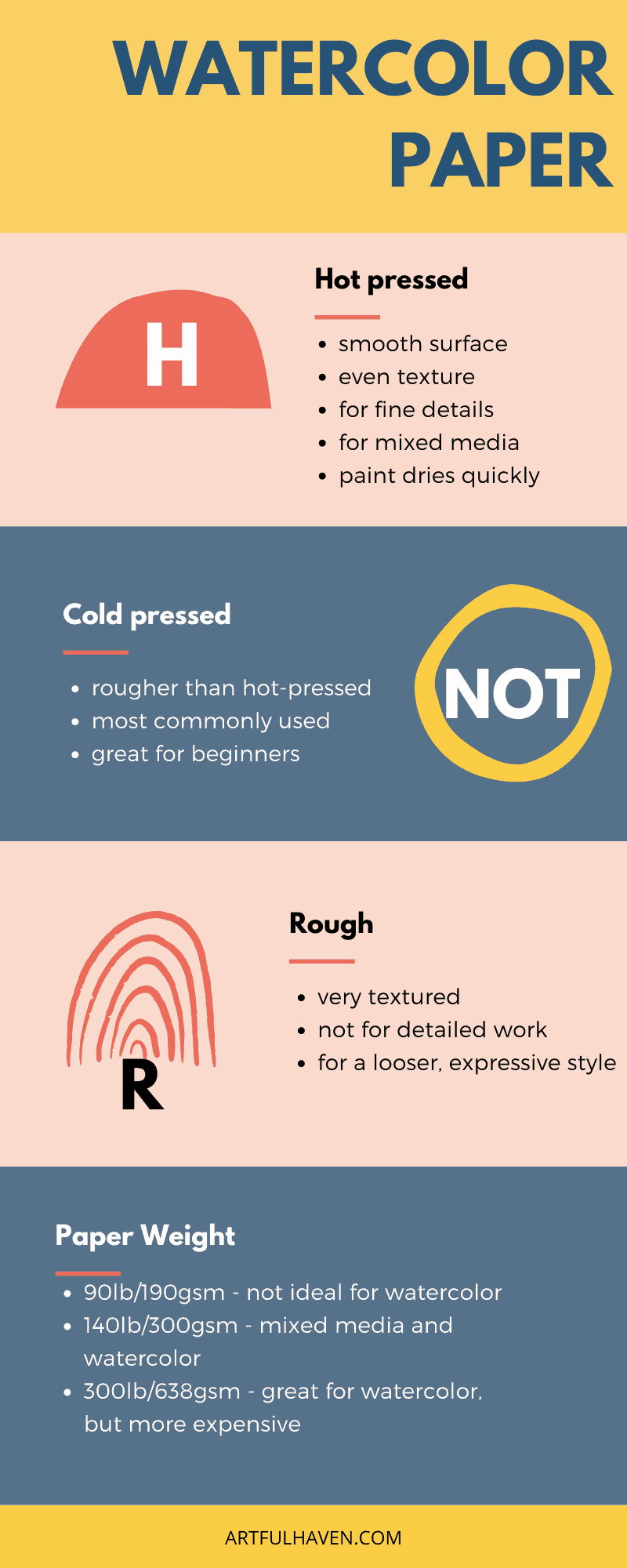
Hot-pressed watercolor paper
It’s usually marked with the letter H. It has a very smooth surface and an even texture.
This type of paper can be used for painting fine details, so if you want to paint a face or a detailed flower, this is the right choice for you.
It is also great for mixed-media painting because the paint dries quickly.
I have Jane Davenport’s art journals with this kind of paper that I’ve been using for a long time and I love them for painting faces.
Cold-pressed watercolor paper
If you see it marked with NOT, this means that it is not hot pressed.
It is rougher than the hot-pressed paper, so it has more texture to it.
This type of paper is most commonly used and it’s great for beginners in watercolor.
Rough watercolor paper
Texture-wise, this one is the most textured, so it’s not a great choice for detailed work but for a more expressive and looser style. It’s also the most expensive.
Paper weight
When it comes to paper weight, there are three numbers you should know.
The thinnest one is 90lb/190gsm paper that’s not so good for watercolor because it’s thin and can’t handle water well.
The next one is thicker, 140lb/300gsm, which is better for watercolor but also for mixed media. I’ve been using this type of paper when I want to make my own DIY art journal or when I want to paint a watercolor picture and maybe hang it on the wall or give it as a gift. I’d definitely recommend this one when you’re starting.
The third one is the thickest, 300lb/638gsm, however, it’s the most expensive, too. But it’s the best one for watercolor painting. Honestly, I haven’t tried this one because I still haven’t got the chance to buy it.
| PAPER WEIGHT | BEST FOR |
| 90lb/190gsm | drawing or acrylic paint |
| 140lb/300gsm | watercolor and mixed media |
| 300lb/638gsm | great for watercolor, but more expensive |
Don’t let these numbers scare you, once you do the shopping for paper, you’ll learn the basics and won’t have to worry about it after that. You’ll start noticing the numbers and it’ll become common knowledge for you. Just like anything else that takes practice.
3. Brushes
Can’t paint anything without brushes, right?
I know, there are so many. Going through a shop aisle with brushes is like being Alice in Brusholand. Sometimes I just wanted to give up, or I ended up buying any brush set just to take something and get the hell out of there.
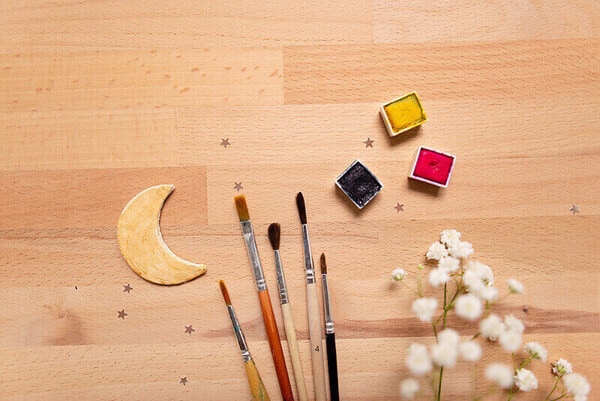
Eventually, I figured out which paintbrushes I love using for watercolor. I won’t go over all the brushes there are, just a few I think you might find useful, I don’t want to overwhelm you right now. Less talk and shopping, and more time for painting.
Types of brushes for watercolor
Round brushes. For painting with watercolor, I love using round brushes the most. They hold enough water and paint and have a narrower tip so you can use them for bigger and smaller areas. If you get yourself some round brushes in different sizes, you’re all set to go.
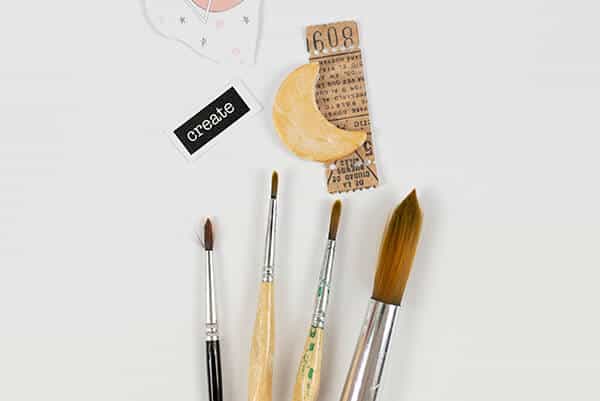
Think about it in this way: L, M, and S sizes. Brushes have different sizes (marked by numbers), but if you choose three going from larger, medium, and a small one, you’ll cover most of your needs for watercolor painting.
I’ve been using a size 18 for L (large), a size 12 or M (medium), and sizes 4 and 2 for S (small).
I use the large one for larger areas, of course, like backgrounds, big flowers, hair, faces, etc.
The medium one usually serves for more detailed work around the eyes if I paint a face, or lips, and other details.
For extra detailed work, I use the small brushes. They’re great for painting eye details, thin lines, writing, etc.
Flat brushes. I rarely use these for watercolor, but they come in handy for larger surfaces or backgrounds. Of course, you need the right size for painting background, so you’ll choose size 20 or higher.
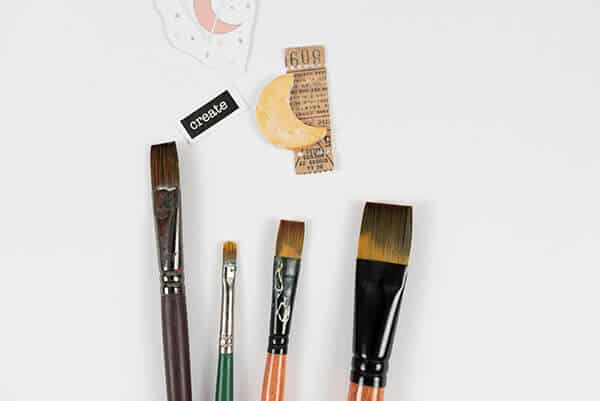
You can use flat brushes to draw and paint shapes and lines, and they’re much better at it than round brushes.
Water brushes. I wanted to tell you about a special kind of watercolor brushes that I discovered a long time ago and have loved them ever since.
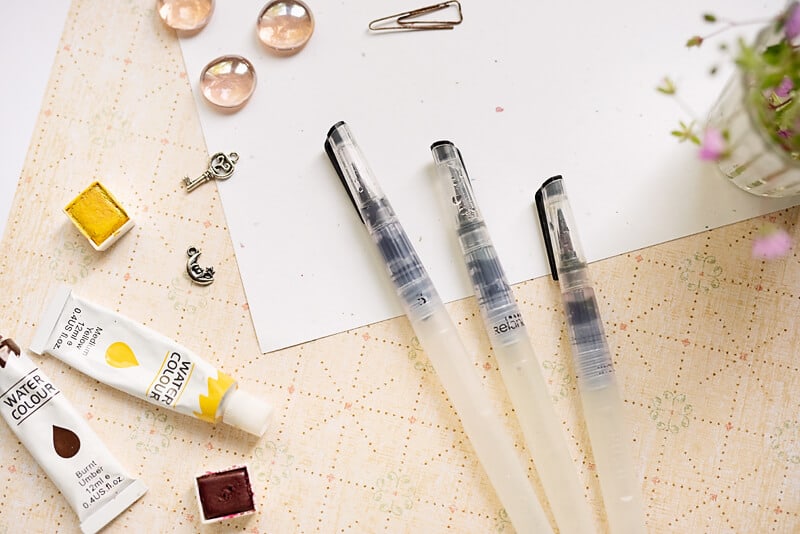
The neat thing about them is that they have their own water container. So, while you paint, you just squeeze the brush and the water flows freely, you just ick the paint with it.
I love the freedom this brush gives me: painting on my sofa, on my balcony, or out in nature. This becomes easy because I don’t have to carry jars of water with me all the time, especially if I travel. Imagine painting with watercolors in an airplane or on a bench in Barcelona! These brushes make that happen.
I want to kiss and hug the person who invented these perfect thingies.
I’d definitely recommend getting one of these brushes, or a set. I have two sets of L, M, and S sizes, and I wouldn’t change them for anything.
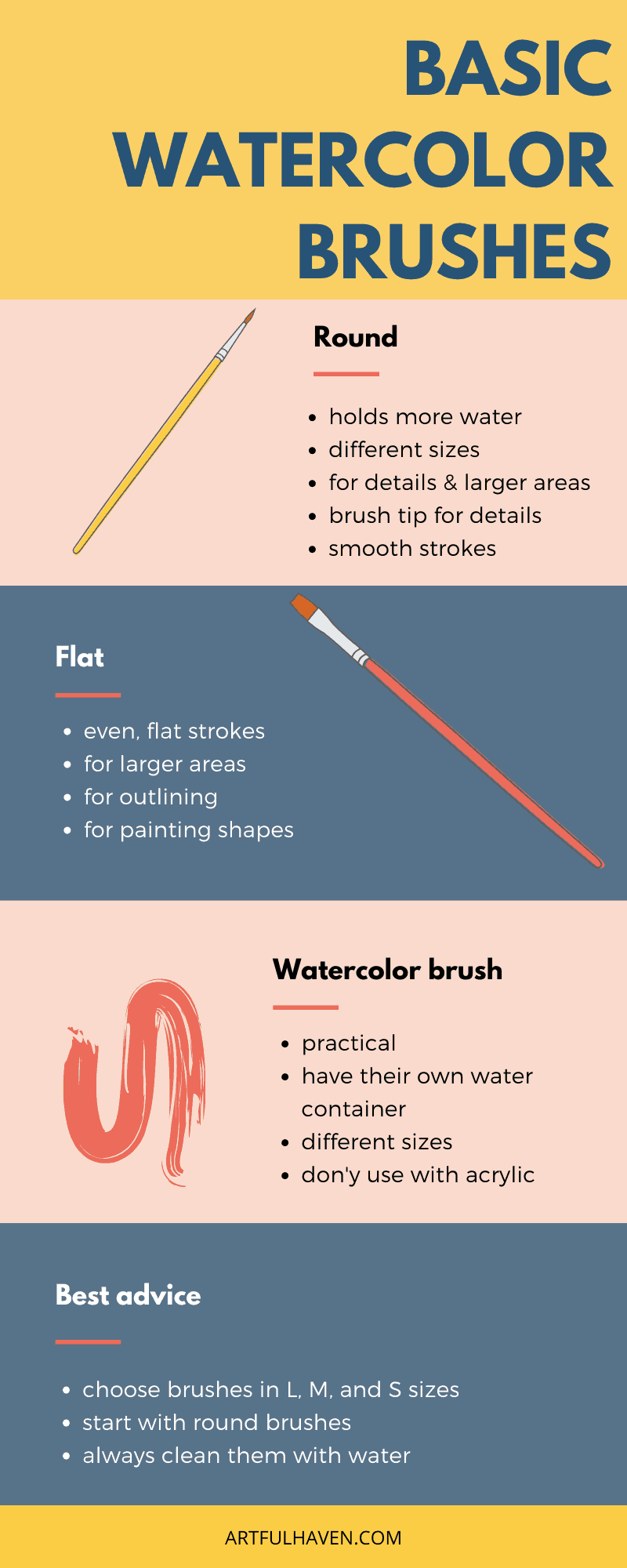
4. Pencil & eraser
If you want to sketch something out before painting it with watercolor, take an ordinary pencil, and do light sketching. When your sketch lines are hard and visible, it might be hard to erase them later.
Another great idea is to sketch with a watercolor pencil. This way, you don’t have to erase anything because this pencil is water-soluble and it’ll just behave like watercolor.
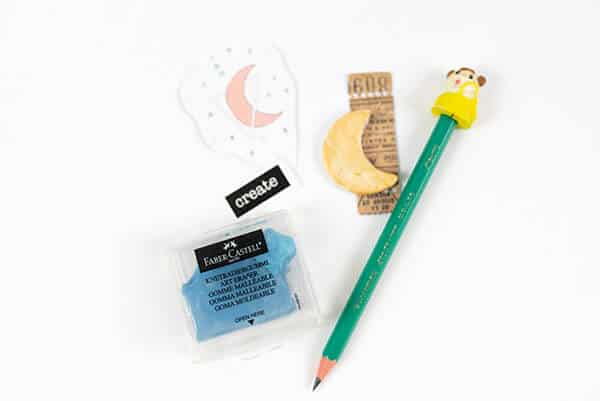
As far as the eraser is concerned, be gentle. Don’t erase as if your life depended on it. Be gentle and erase bits by bits so you don’t accidentally pull off the paint.
A great solution for this is a kneaded eraser. I’ve had Faber-Castell’s kneaded eraser for a long time and they are useful and practical (in the photo above).
It’s like gum so you can shape it any way you want and even create fine tips for erasing the slightest details. It erases my pencil lines but leaves watercolor paint without lifting it. And, once again, be gentle with erasers.
5. Water jars
Yes, you’ll need a lot of water.
I usually prepare two jars of water so I can always clean my brushes and don’t need to refill all the time.
You clean your brushes in both jars, so the second one is always going to stay cleaner than the first jar you use.
As opposed to acrylic paints, watercolor won’t make the water muddy right away so you can use these jars longer into the project.
Also, why not use the plastic containers you have left in your kitchen? They don’t have to be fancy jars, yogurt cups will also do the trick.
6. Paper towel
Paper towels are handy when you need to dry your brush quickly or clean your watercolor brushes (the ones with a water container).
Trust me, you’ll need this and prepare it before painting.
7. Watercolor pencils
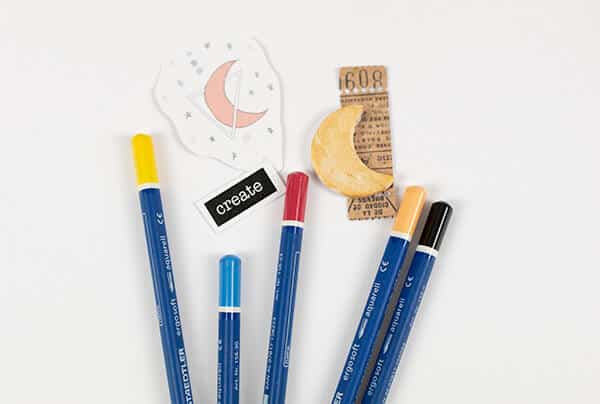
These are one of my favorite watercolor supplies for beginners.
They are practical: you draw and sketch with them and then just dissolve them with a brush and water.
I’ve only used Staedtler’s ergo soft aquarelles but I love working with them. They’re not like actual watercolors and are less pigmented. However, they are great for sketching and shading, and I’ve been using them to draw and paint faces.
For example, I love how I can shade my drawing with them and when I add water, these areas just blend perfectly.
Basic watercolor supplies for beginners – recap
Here are the main points to help you gather your watercolor supplies for art journaling.
- Choose the right paper. I recommend at least 300gsm.
- You can use any watercolor set you like or can afford.
- Choose round brushes in three sizes: L, M, and S (decide this approximately, choose around 18-20 for L, around 12 for M, and 4 or lower for S).
- Try water brushes, and you won’t regret it.
- Add jars with water, and a few paper towels and you’re all set to go.
Now, just experiment and enjoy your watercolor supplies.
RELATED WATERCOLOR ART JOURNALING ARTICLES
Easy Watercolor Pages You Can Do in 20 Minutes or Less
Art Journal Watercolor Background Techniques: 5 Easy Ideas
Easy Watercolor Paintings for Art Journaling Beginners
Do you like these ideas for watercolor supplies for beginners? Pin this post to your favorite Pinterest board!
